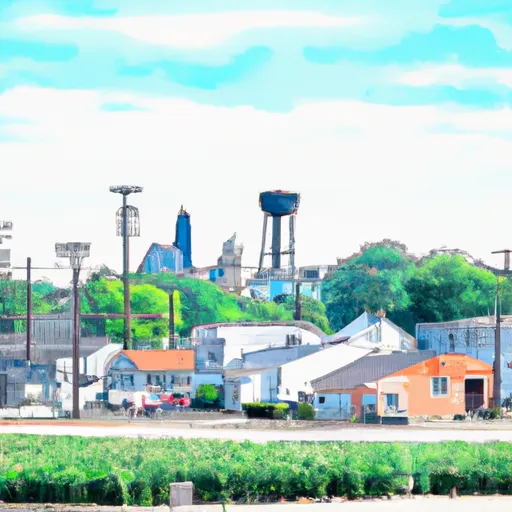-
 Snoflo Premium
Snoflo Premium
Get unlimited access to all our content
With no Ad interruptions! - Start Your Free Trial Login with existing account
Seaton
Eden Index
Climate
8.0
•
Recreation
4.3
•
Community
•
Safeguard
4.7/10

Seaton, Illinois is a small village located in Mercer County in the northwestern part of the state. The climate in Seaton is classified as a humid continental climate, characterized by warm summers and cold winters. The average annual temperature is around 51°F, with July being the warmest month and January the coldest. Precipitation is fairly evenly distributed throughout the year.
Seaton benefits from its proximity to the Mississippi River, which brings with it a rich hydrology. The village is surrounded by several lakes, streams, and wetlands, providing ample opportunities for fishing, boating, and other water-based activities. The Mississippi River itself offers opportunities for kayaking, canoeing, and birdwatching.
For outdoor enthusiasts, Seaton offers various recreational opportunities. The area is well-known for its hunting, with abundant deer, turkey, and waterfowl. There are also numerous hiking and biking trails in the vicinity, allowing visitors to explore the beautiful natural surroundings. In addition, Seaton is home to the Big River State Forest, which offers camping, picnicking, and horseback riding facilities.
Overall, Seaton, Illinois provides a pleasant climate, diverse hydrology constituents, and a range of outdoor activities, making it an attractive destination for nature lovers and those seeking outdoor adventure.
What is the Eden Index?
The Snoflo Eden Index serves as a comprehensive rating system for regions, evaluating their desirability through a holistic assessment of climate health, outdoor recreation opportunities, and natural disaster risk, acknowledging the profound impact of these factors on livability and well-being.
Climate Health Indicator (CHI): 8.0
Seaton receives approximately
927mm of rain per year,
with humidity levels near 81%
and air temperatures averaging around
11°C.
Seaton has a plant hardyness factor of
5, meaning
plants and agriculture in this region thrive during a short period during spring and early summer. Most
plants will die off during the colder winter months.
By considering the ideal temperature range, reliable water supplies, clean air, and stable seasonal rain or snowpacks, the Climate Health Indicator (CHI) underscores the significance of a healthy climate as the foundation for quality living.
A healthy climate is paramount for ensuring a high quality of life and livability in a region, fostering both physical well-being and environmental harmony. This can be characterized by ideal temperatures, reliable access to water supplies, clean air, and consistent seasonal rain or snowpacks.
Weather Forecast
Streamflow Conditions
Upper Mississippi-Skunk-Wapsipinicon
Area Rivers
Upper Mississippi-Skunk-Wapsipinicon
Snowpack Depths
Upper Mississippi-Skunk-Wapsipinicon
Reservoir Storage Capacity
Upper Mississippi-Skunk-Wapsipinicon
Groundwater Levels
Recreational Opportunity Index (ROI): 4.3
The Recreational Opportunity Index (ROI) recognizes the value of outdoor recreational options, such as parks, hiking trails, camping sites, and fishing spots, while acknowledging that climate plays a pivotal role in ensuring the comfort and consistency of these experiences.
Access to outdoor recreational opportunities, encompassing activities such as parks, hiking, camping, and fishing, is crucial for overall well-being, and the climate plays a pivotal role in enabling and enhancing these experiences, ensuring that individuals can engage in nature-based activities comfortably and consistently.
Camping Areas
| Campground | Campsites | Reservations | Toilets | Showers | Elevation |
|---|---|---|---|---|---|
| Little Sunflower River | None | 107 ft | |||
| Rocky Springs - Natchez Trace Pkwy | 22 | 235 ft | |||
| North Rec Composite | 15 | 97 ft | |||
| Float Camp | 16 | 472 ft | |||
| Leroy Percy State Park | None | 108 ft | |||
| Lamar Dixon Expo RV Center | 300 | 11 ft | |||
| Tickfaw State Park | None | 15 ft | |||
| South Recreation Composite | 100 | 140 ft | |||
| Clear Spgs Rec Area | 45 | 317 ft | |||
| Lake Charlie Capps | None | 146 ft |
Nearby Ski Areas
Catastrophe Safeguard Index (CSI):
The Catastrophe Safeguard Index (CSI) recognizes that natural disaster risk, encompassing floods, fires, hurricanes, and tornadoes, can drastically affect safety and the overall appeal of an area.
The level of natural disaster risk in a region significantly affects safety and the overall livability, with climate change amplifying these risks by potentially increasing the frequency and intensity of events like floods, fires, hurricanes, and tornadoes, thereby posing substantial challenges to community resilience and well-being.
Community Resilience Indicator (CRI):
The Community Resilience Indicator (CRI) recognizes that education, healthcare, and socioeconomics are crucial to the well-being of a region. The CRI acknowledges the profound impact of these elements on residents' overall quality of life. By evaluating educational resources, healthcare accessibility, and economic inclusivity, the index captures the essential aspects that contribute to a thriving community, fostering resident satisfaction, equity, and social cohesion.

